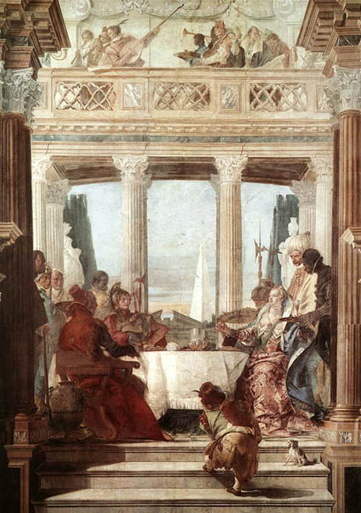Andrew Graham-Dixon looks at the frescoes of Tiepolo in Venice and his drawings currently on show in London
In 1739, grateful for services rendered, the Council of the Scuola del Carmine in Venice designated him ''The most celebrated of the virtuosi''. Giambattista Tiepolo (1696-1770) was the greatest Venetian artist - with the possible exception of Canaletto - of the eighteenth century. No one could cover a wall like Tiepolo, once described by Michael Levey as ''the ideal artistic athlete'' for whom ''no stadium was too big or daunting.'' His speed and facility were legendary; he was said to paint a picture in less time than it took for other painters to grind their colours, and the story was circulated that he completed his Communion of the Apostles (now lost) in under 10 hours.
Posterity, however, has not been kind to Tiepolo. Within a few years of his death, his art was regarded as an anachronism. By 1800, the great Venetian tradition of painting had, effectively, died. The Venetian Republic had itself finally expired five years earlier, and Tiepolo's art seemed to belong to an already distant historical era. He had become Italy's great painter of the ancien regime, artist by appointment to a pre- revolutionary age, sustained by what had come to seem by the turn of the century an outdated fabric of aristocratic and religious myths.
Tiepolo has remained a profoundly unfashionable artist. Even now, at a time of unparalleled eclecticism in taste, led in part by the market's keenness to find new commodities in every last art-historical nook and cranny, he is little regarded. The explanation for this may lie partly in the fact that his greatest creations, being frescoes, are by definition unsaleable. But it may have as much to do with his lifelong devotion to a...


